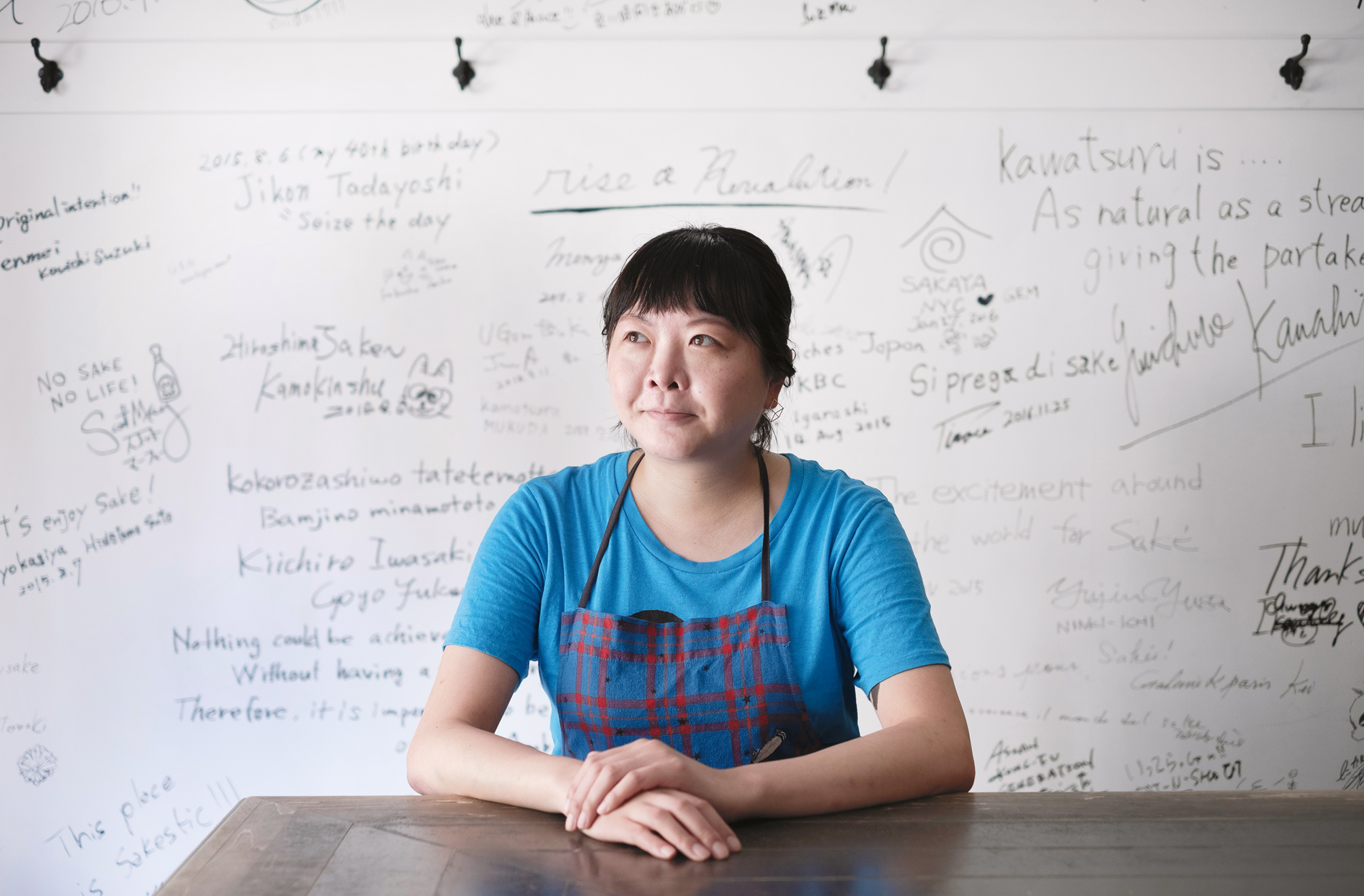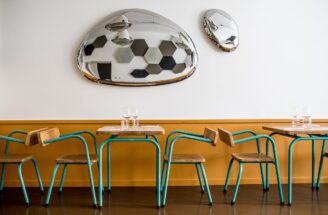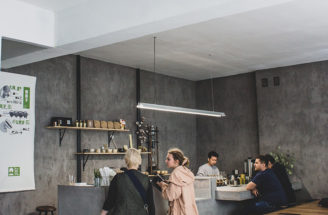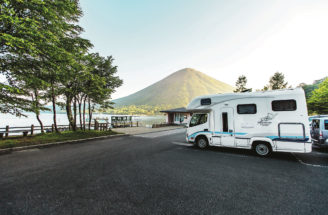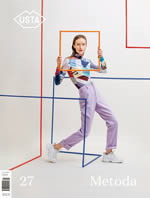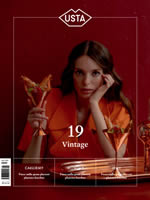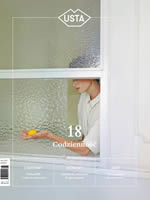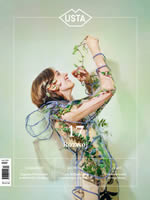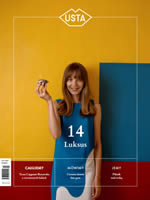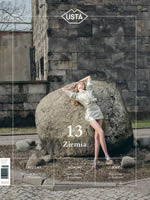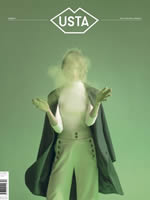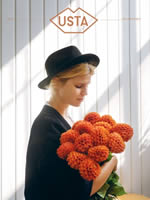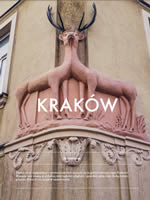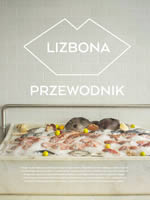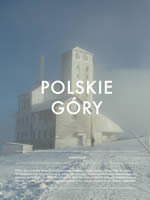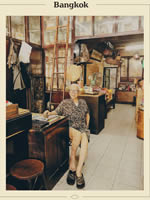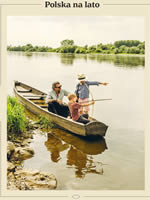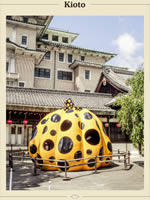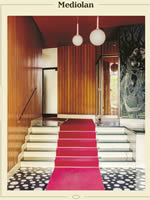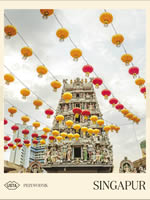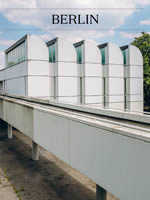Marie
Marie – 35 years old – was born in the northern Iwate prefecture countryside. To a father working in the local bank and to her mother who according to Marie is one of the most celebrated Japanese patchwork textile artists. Moving to the big city and opening a sake bar – not the average path of a Japanese countryside girl – seems just as far away as she could go from the quiet life and her mother’s delicate needle work. But As I get to know Marie and her craftsmanship better I realize how much she took from her mother’s profession. How she too sees the world as endless pallets of colors gently brought together, each with endless attention to detail. Both when creating a new sake collaboration and definitely when creating an evening experience for any one of her customers. She sees the world in colours, as a delicate patch work, she will simultaneously create a number of them, each one different but very clear to her – evening after evening in her bar. It is a well known fact amongst her customers that the best way to enjoy an evening here is to give her your full trust and let her guide the way and lead the evening’s pairing path.
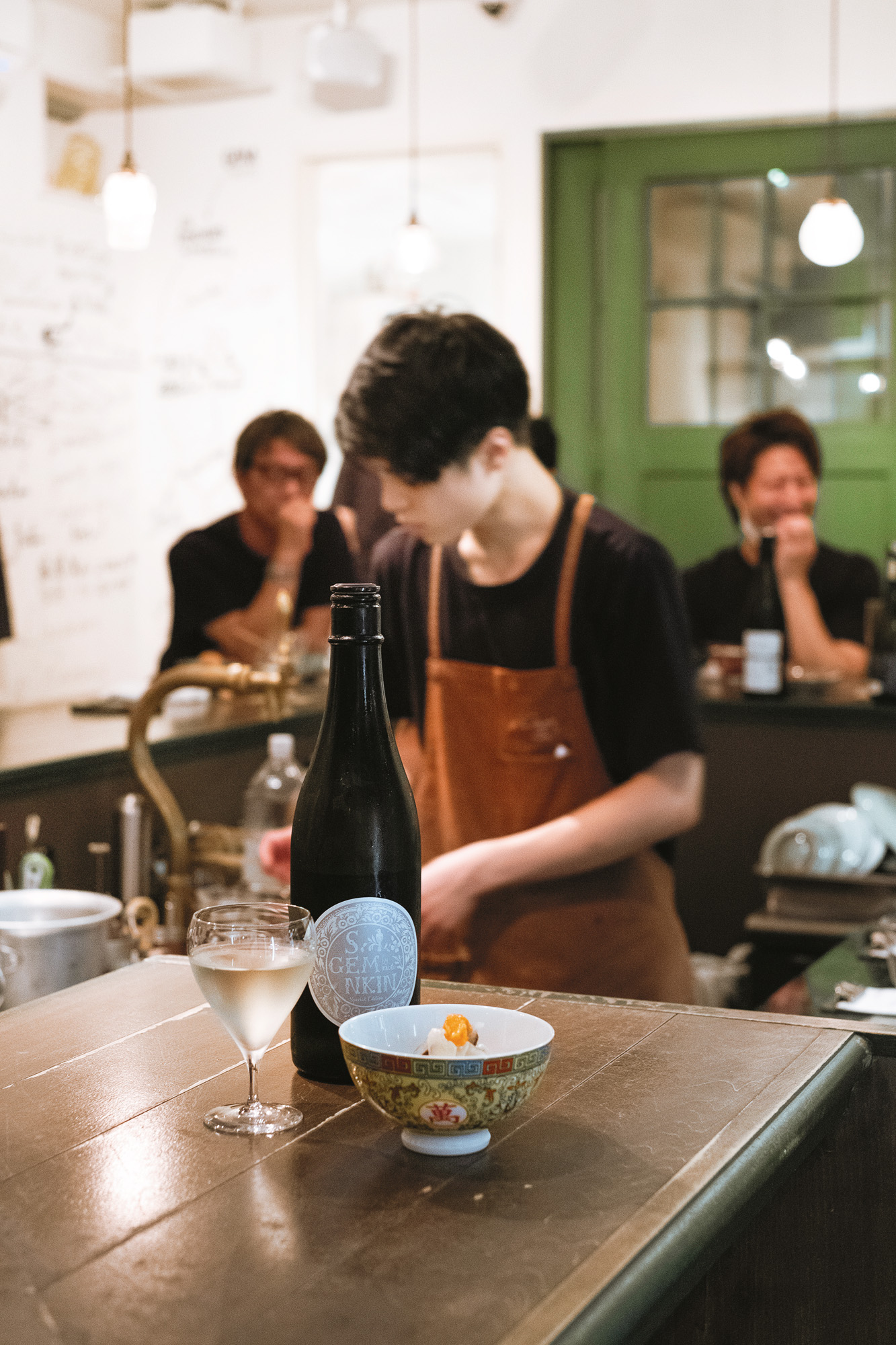
GEM by MOTO
Gem – a precious object. Not necessarily a precious stone. More like a precious child. Moto – a is a small starter batch of sake that is used to grow a vibrant yeast colony in a small barrel, before the fermentation is moved to the main and larger fermentation tank. There is a subtle yet meaningful word game here Shubo 酒母 and moto 酛 are synonyms. Moto (origin or base) is the older term, but, as it is not a general-use character and only used in a sake context, the use of shubo has become more common. Shubo is written with the characters for “sake mother”. Thus intrudcing a muternal and feminin hint into the bar’s name. So the “Mother of the Precious Sake” has created a special bar that treats the sake as a very dear element of life. Marie stands within the small bar with the kitchen behind her at the white walls surrounding her that are covered with hand written messages and drawings from some special customers, friends and mainly here sake brewing collaborators – Marie with her piercing eyes sees people, sees sake (and apparently also sees auras) and brings them together. She tells me how each sake bottle is dear to her like a child and how she wishes to discover and emphasize the characteristics of each sake she serves at her bar. I ask Marie about the experience she wants to create for her clients. – It really depends on the customer – she explains – I try to see them as soon as they walk through the door. If it is someone who seems to be after a long day’s work and looks tired – I just want to create a relaxing atmosphere for him or her – where he or she can enjoy their favorite food, regular sake – just alone, quietly. But is i see someone who is more cheerful and GENKI (a very useful Japanese expression for feeling lively) so i will offer him or them a surprising pairing of sake and food.
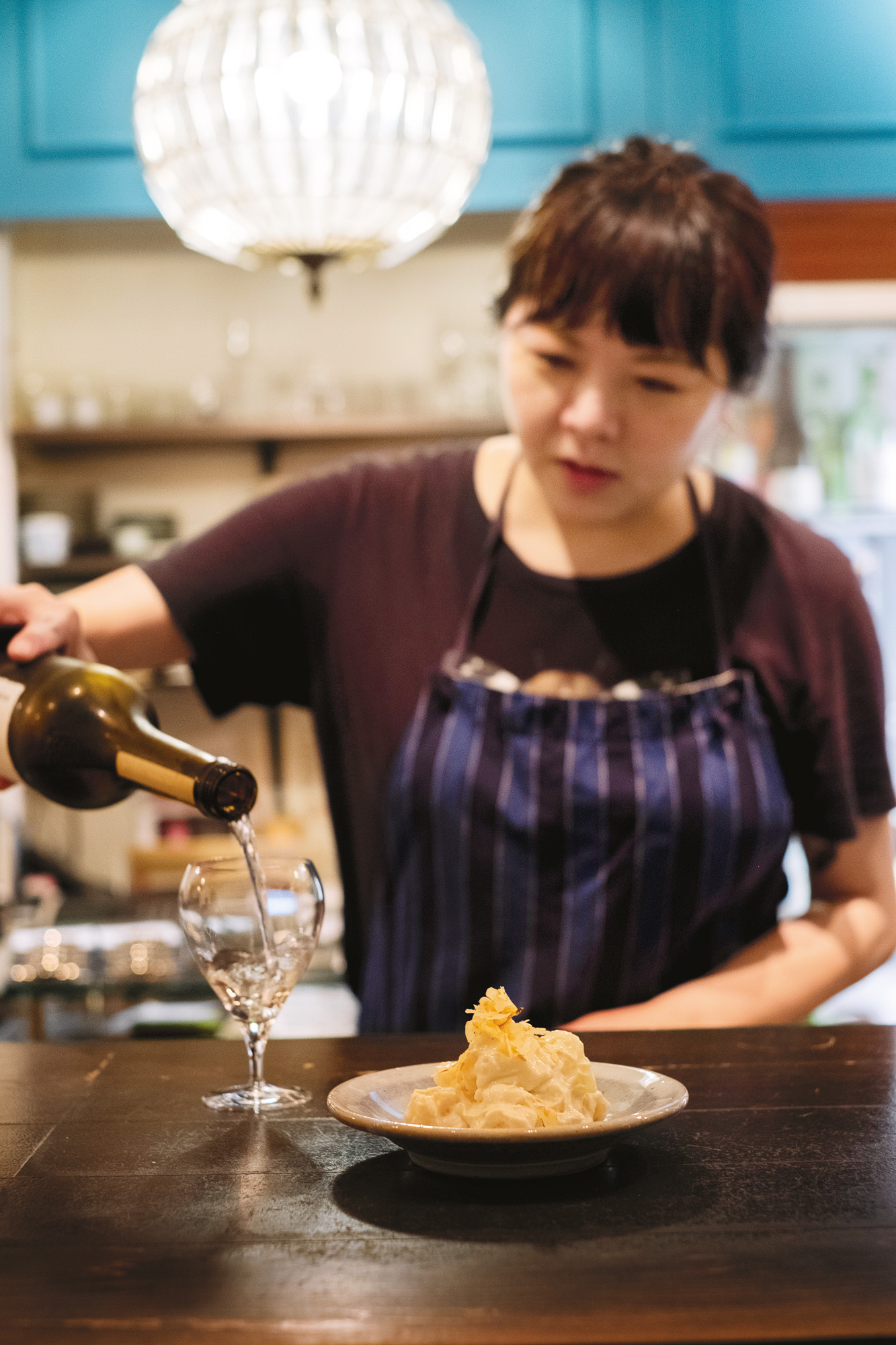
Pairing
I first came for dinner a couple of years ago – there were three of us and each had a different pairing, a different experience – how do we create this and why? – I knew right away when you came that you were curious. So I went for a surprising individual pairing. But if I see a couple who seem like they came to chat I will offer them a simmar pairing so as not to take attention from their conversation. Marie goes on to explain her strategy: – I see each of the customers’ experiences as a full pallete of colors. I literally see each Sake as colour, this is not something i can explain why or how – but to me the colours are very clear. So i start with one colour and i will move on to the next, creating a harmonic layering of color. According to Marie, Sake traditionally was made with a very subtle taste so as not to compete with the gentle tastes of Japanese food. She sees a big difference between wine and sake “the way i see it – wine with its strong characteristics is to be enjoyed after swallowing the food with the after tastes of the bite. But in Japan we eat differently – we call it triangle eating – which means you have many small dishes and I want the customer to enjoy the sake with each bite he has from any dish. Another expression we use means cooking in the mouth – eating and drinking at the same time and the mixture in the mouth creates something new. It is nearly like a new dressing for the food in the mouth”
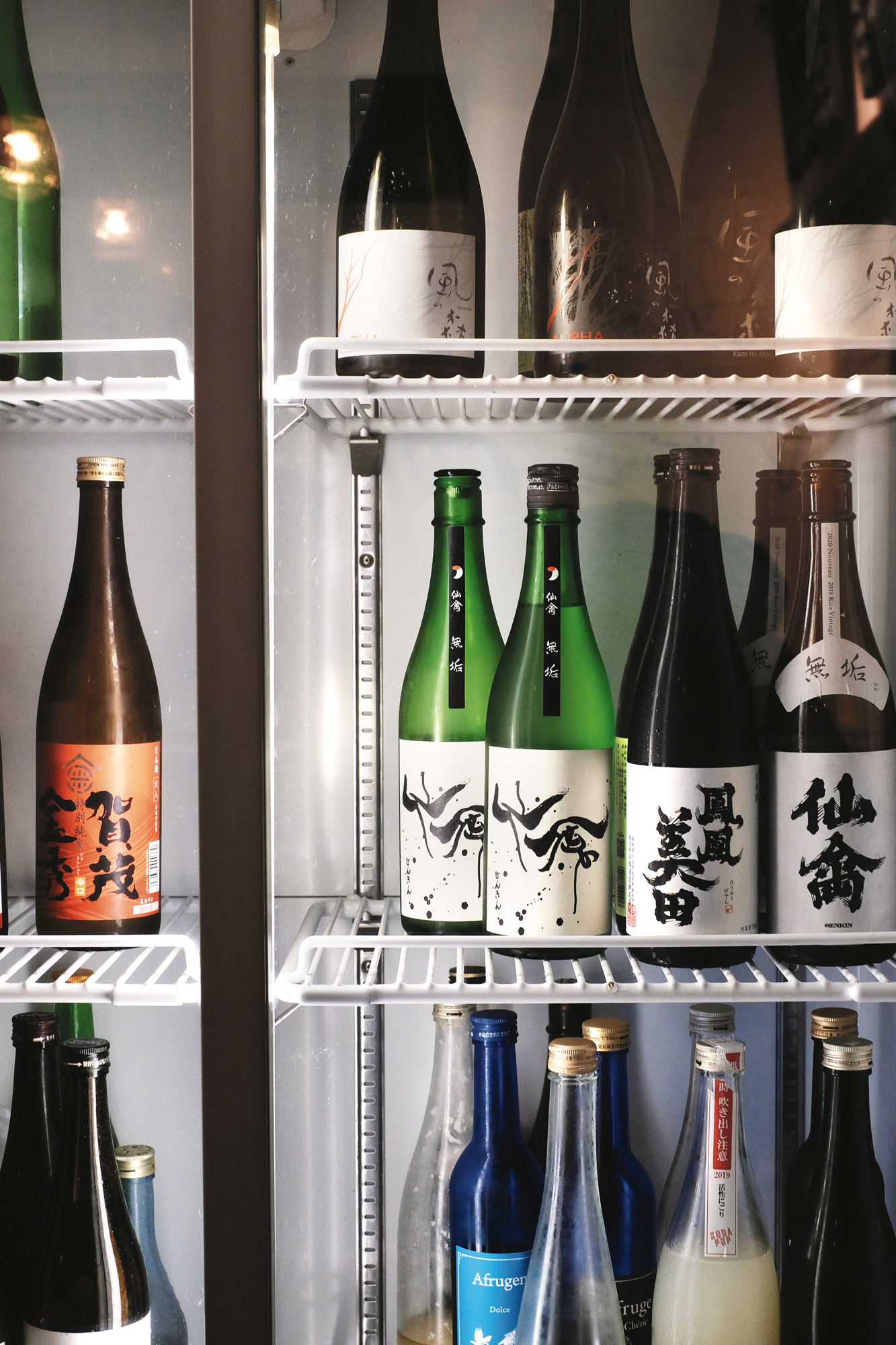
Journey
There are around 20 breweries all over Japan that Marie is in close contact with. These Relationships were delicately built over the years. – It is not like I just come to the brewery and request a new product. I had to build up a deep and trustful relationship with each of the breweries. For over 10 years I have gone to visit them every year. Many years ago when i just started visiting the breweries they simply could not understand – why is a woman coming to visit us? What is she doing here? But I really wanted them to take me seriously and to accept me. So I started to help them with their work – especially the very hard parts. I had to prove myself so I used to help them carry the very heavy sacks of rice around the brewery – just to prove to them how serious I am. Year after year I continued to visit them – slowly building the trust and the dialogue. Reaching the point when they could appreciate how seriously I take sake and how much passion I have – it took no less than three years, and those years were very hard. They actually totally ignored me at first. I cried so much during those years. What gave me the power to go on during those years was the very strong energy of the Koji (the traditional Japanese fungus used for Sake fermentation) – I feel I can really see the aura of this precious Koji which is the base of the sake making process – and that gave me so much power.
One of her first collaborations with a sake brewery was created thanks to a mistake. A number of Sake barrels made in one of the breweries that the master brewer was not happy with and was about to throw down the drain “as sake is normally valued purely as a fresh product they were about to get rid of the Sake. But I had a feeling about this sake and proposed to them to actually store it for some time in wooden barrels. Luckily they agreed, maybe as they had nothing to lose, from their point of view it was a failure anyway. But after some time it came out of the barrel and it was totally fabulous. That was the beginning of many future experiments and collaborations. The base of our new understanding about aging Sake”
Marie’s bar was the next stage of her journey. After diving deeper into the sake world – she wanted to share all the new knowledge and discoveries with people – both in Japan and around the world. So together with her chef whose training is based on WASHOKU – a traditional Japanese kitchen she creates a changing, seasonal menu to play a major part in the act of sake pairing. “I advise her to include new ingredients that traditionally are not part of this cuisine – such as exploring the combination of avocado and miso. Or blue cheese, or other elements that I learn and discover when I travel abroad. I always try to bring back exotic foods that we don’t know here in Japan – and together we create the menu and the dishes. Customers can easily recognise if and where I have been traveling according to the menu.”
It is surprising at times to discover just how Marie is drawn by the unknown. – I totally believe there is a way to pair sake with any cuisine. If I am pairing here in Tokyo – and I have control on the way the sake is stored and its temperature and so on – so yes – I can do it and pair it in a very comfortable way. But when I am abroad and the sake bottle is not stored in the perfect condition – or the local food is made entirely locally without considering the sake and the Japanese palate so I can actually do more radical and interesting pairings. Like mixing sake with local teas or with very special and strong spices. I find I am actually more free abroad where I have no boundaries or limitations. There are so many dishes I have never tried yet around the world – but I am so curious to. And looking forward to pairing sake with.

Relationships
Marie’s Sake fridge which appears to be just a standard fridge hides endless information and many private stories . It is custom for Sake fridges to be arranged according to the type of sake but here it is more like a social grid. The bottles are arranged according to Marie’s relationships with the sake, with the brewery and the relations of those people between one another. This is yet another reason why she finds it so hard to add a new sake to her menu and collection. The complex thought of figuring out where to house the new bottle is quite scary and overwhelming.
She has her morning routine which involves tasting 20 different kinds of Sake. Her private way of saying good morning to each of them – wishing them, in a very traditional Japanese way a good, pleasant and successful day together.
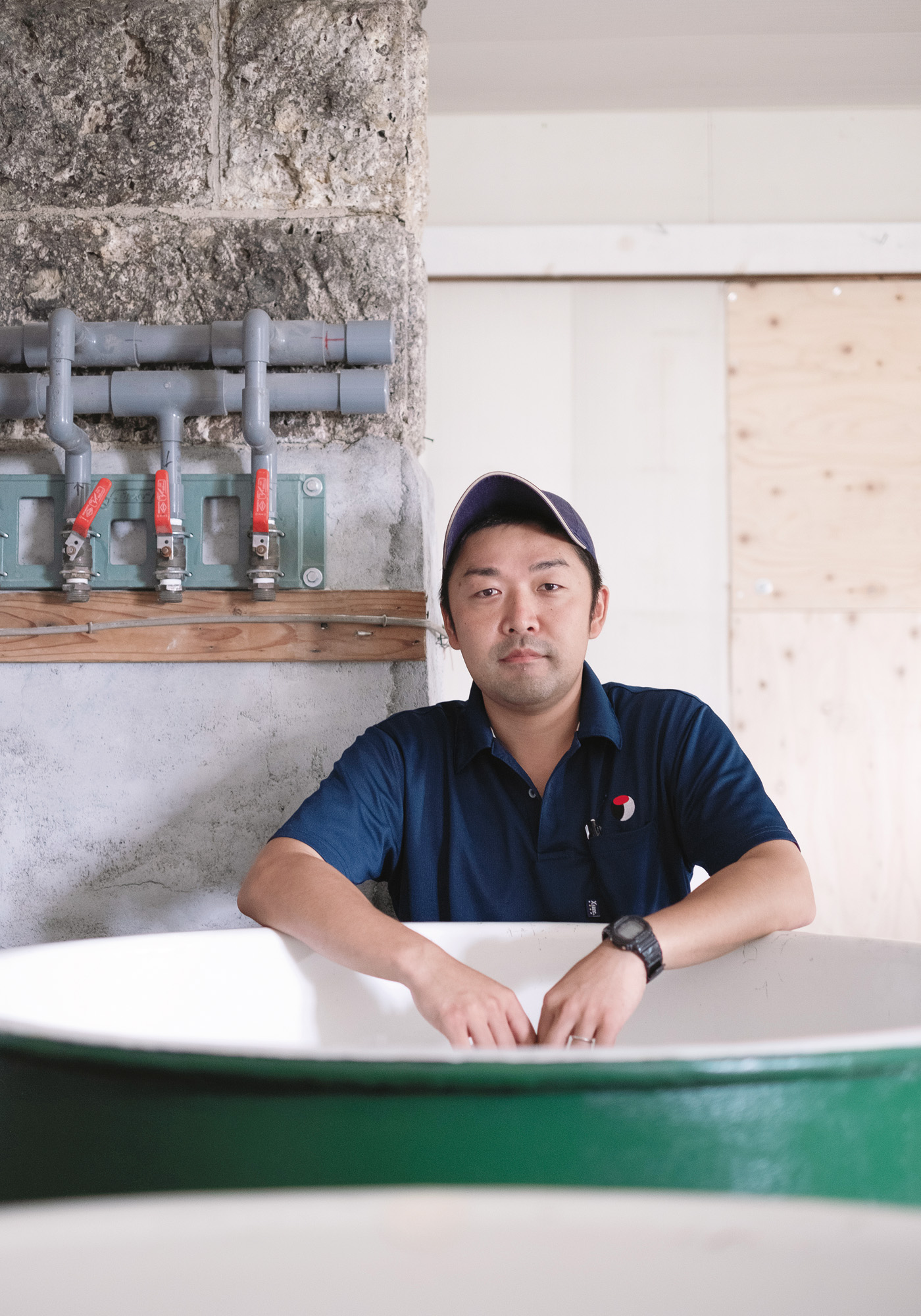
Collaborations
It’s the last day of August and we are heading to meet Marie at Senkin, one of her favorite breweries. Driving through the rice fields of Tochigi prefecture – just a moment before they are ready to be harvested. We are surrounded by the incredibly powerful green stalks crying the very heavy burden of the many rice grains. Driving on the tiny roads in between the fields, filling us with a very special energy. We arrived at the brewery that still operates in its original building built 11 generations back by the Usui family that still run the family business. As many buildings in the area it is constructed from the beautiful Oya stone which is created from lava and ash and is famous for the area.
The brewery is now run by two brothers Kazuki who is incharge of the business and management and by Masato who is the self taught TOJI – master brewer of the brewery. A young strong man with a straightforward business like manner who showed us around the brewery. The brothers are taking advantage of the few months prior to the next season of sake brewing and with a significant investment are renovating the brewery. Marie san has been building a relationship with the two over the past ten years. It began when she opened a bottle of their sake some 10 years ago – and the bottle opened with a unique kind of pop. She was so curious about this unusual effect for a sake bottle that she picked up the phone to call the brewery where Kazuki picked up the phone by chance. It took a number of visits to the brewery before they actually paid any attention to her. But 10 years and 5 unique collaborations later and she is now received with a special warm, family like reception and with the utmost respect. We take a tour of the brewery to see the huge wooden barrels used of the natural line of sake and all the different rooms that soon when autumn comes, will be busy with the many processes involved in the brewing. Learning that the main philosophy of the young brothers is keeping it all local, Domaine, similar to the french wine making method, from using the natural water that comes from a spring 15 meters below the brewery and only local rice that they can trace to an exact field and that was grown with the same exact spring water. A full local process.
When I ask Kazuki what’s his plan for a successful future, he says “it will be found in going back to the complicated old process of sake making. We call it KIMOTO – a three staged complex process – using no technological shortcuts that were introduced in recent decades. That is where the future lives.”
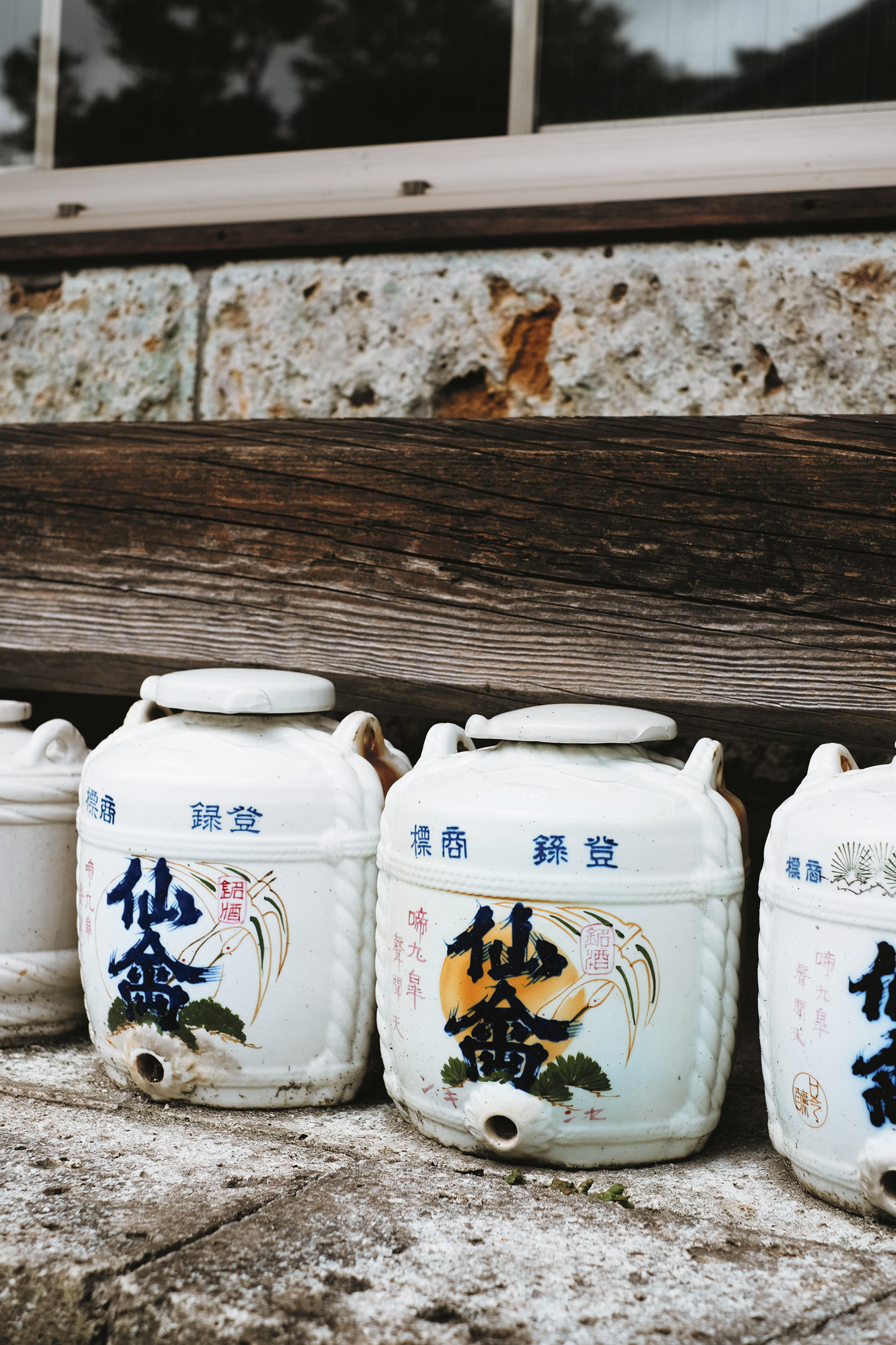
Taste / inspiration
After a long day of discovering the many technicalities of Sake making it was tasting and drinking time. Over a french dinner we slowly dived into their sake world. Discovering the different series of the brewery one after the other according to how Maire spontaneously felt they should be paired with the different dishes. The climax was clear. First a bottle from the Organic Nature series – with a strong crisp and delicate yet deep fruity world of flavors. And then came the next. The collaboration bottle turned out to be based on the same natural sake but left for three years in bourbon barrels to make a whole new taste and experience. It’s a journey in one’s mouth – a carefully tailored one between the Tochigi rice field (the exact one we visited just a few hours ago) to the corn fields of Bourbon County in Kentucky but its a very smooth journey and a deep one, full of sweetness yet not sweet at all, it is clever and emotional. It is incredible to drink it in front of its creators.
Two serious people, full of dedication and pride in their craft. With little emotion on the surface. Yet when sipping the sake – the depth of their creative inner world and immense sensitivity become clear and transparent like the drink itself. It was an unforgettable moment.
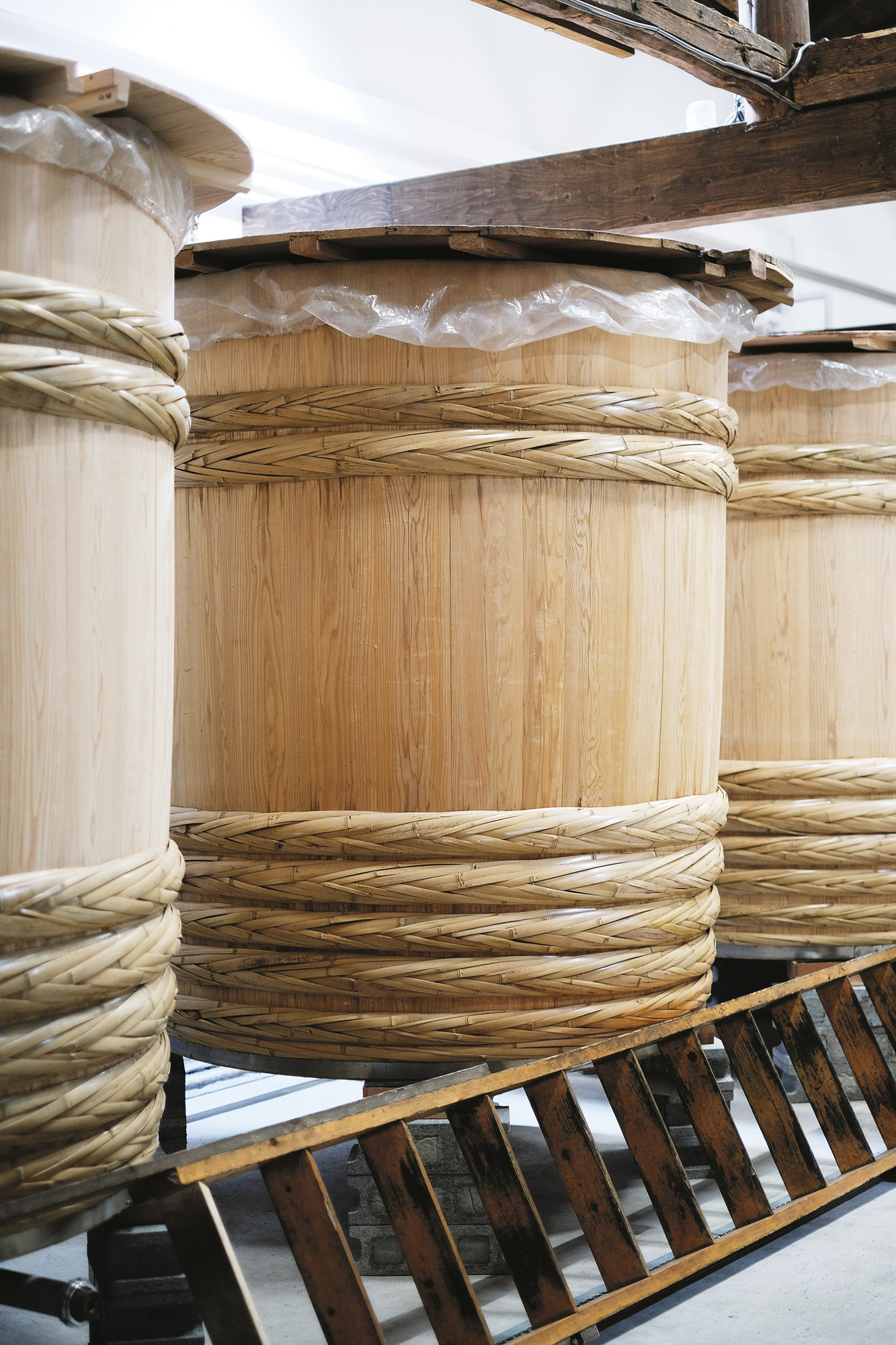
Inspiration
I ask Marie about this sake, what was the inspiration. She tells me of a morning a few years back when she woke up at the brewery on one of her visits. It was just 10am but she headed to the local favorite ramen located not far for the rice fields and walked in naturally – even though it only opens at lunch time. The owner – slightly confused agreed to serve Marie a ramen. After which she went to the toilet. Whilst sitting on the toilet she saw a little doll of her favorite Japanese cartoon – Sailor Moon with a crystal. The crystal spark triggered something and the image started to come together. When we left the toilet she asked the owner if it is his daughter or granddaughter who likes this character. But to her surprise he admitted it was he who liked her. She then had a clear image of the next Sake she wanted to make – as usual for her, in the form of a color – somewhere on the gray scale located between a diamond and a pearl.
She rushed back to the brewery to translate this color into the exact recipe.
Text: Arieh Rosen
Photos by: Noam Levinger
Gem By Moto
Recomended to make a reservation
1 Chome-30-9 Ebisu, Shibuya-ku
Tōkyō-to 150-0013, Japan
03-6455-6998
Share this entry on Facebook or copy link